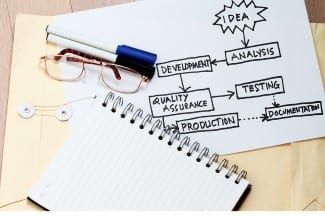How to Use Business Process Mapping for Operational Success

Business process mapping is a lean management strategy that seeks to understand and eliminate sources of waste. Companies often rely on many processes to provide value to customers; by mapping how these processes work, firms can identify which activities add value and which activities cause friction in the process, making it less efficient. While most common in manufacturing, business process mapping can apply to virtually any industry.
Managers must understand how their company operates at all levels. Business process mapping is an essential tool that demonstrates how internal activities are performed.
There are many types of business process maps that companies can use to support compliance, onboarding employees, completing internal audits, and improving operations. The type of map and frequency of examination often depend on the company completing it and the rationale for completion. Larger, complex firms may complete multiple forms of business process mapping on a recurring basis, while smaller firms may complete a mapping project with a few specific questions in mind. The tool provides considerable flexibility, which is why it’s so popular among proactive, forward-looking businesses.
What is the Difference Between Business Process Mapping and Business Process Modelling?
Business process mapping often seeks to illustrate how organizations achieve success. It formalizes the series of activities performed to take raw inputs (including human talent) to develop a product or service that generates revenue. It is a tool often used in lean manufacturing to allow management to see where inefficiencies occur, then develop a plan to reduce or eliminate these efficiencies. They can also show the most critical steps of a process and help promote the success of these value-adding activities.
Business process modelling is a slightly different concept, although the two terms are often used interchangeably. “Modelling” is often based on mapping and typically suggests the optimal process to achieve intended results. Modelling is the core focus of many innovative software programs that can predict bottlenecks and help management re-structure activities to provide the most ideal way to achieve intended outcomes.
Benefits of Mapping Business Processes
Depending on the type of organization completing a business process mapping project, the reasons for completing an analysis can vary. Usually it’s to promote lean operations through identifying areas where activities are unnecessary or prevent the streamlined flow of resources. Generally, its main benefits include:
- Communicating Processes: Whether onboarding new employees or ensuring workers understand the best method for completing activities, business process maps are best at communicating the flow of steps needed to achieve a desired outcome. This also helps standardize processes and ensure that they’re completed correctly from employee to employee, or location to location for larger employers with multiple facilities.
- Process Improvement Audits: Building and communicating a repeatable process helps improve product and service consistency, but how can organizations be sure that the process is effective? Improvement audits are necessary on an ongoing basis to ensure the process is as streamlined and profitable as possible. Business process mapping helps illustrate activities so that they can be improved.
- Compliance: Some companies that sell regulated products must complete business process maps to prove that their offerings meet or exceed minimum standards. ISO 9001 is one set of regulations where this is required, although there are many others.
Business Process Mapping Steps
Although developing an actionable business process map can seem challenging, it can effectively be simplified into five stages:
- Identify the Process: Identify the process’ purpose, scope, lead and supporting employees, and work areas or facilities involved.
- Gather Information: Ask those involved in the process how it works to develop a factual basis for how it should be completed vs. how it’s currently being completed.
- Develop the Business Process Map: Using facts gained from those involved in the process, lay out how the process works step-by-step, ensuring all details are included and the entire process from start to finish is depicted.
- Analyze and Act: Challenge each step of the process and critically review what value it adds, or if there are issues that arise because of the activity. Ask “why” the activity happens, where it happens, when it happens, how it happens, and who it’s completed by. When you understand these functions, eliminate or combine activities, rearrange process steps, or add new steps if there’s an opportunity to increase value.
- Manage the Process: Once the process has been modified, remain attentive to how it is performing to address if the changes are bringing a positive, sustainable impact. If so, maintain the process map and continue occasional reviews. If changes are not beneficial or sustainable, re-analyze the situation and continue modifying the process until it meets the organization’s needs.
Government Funding for Business Process Mapping Projects
If your Canadian company will complete business process planning activities, there’s funding and other supports that can help. If your team has the internal capacity and expertise to perform these types of projects internally, the Industrial Research Assistance Program (IRAP) can offset technical employee salaries by up to 80% for time spent on mapping. If your organization lacks the internal expertise to perform process mapping projects, IRAP also covers up to 50-65% of technical subcontractor costs.
Mentor Works can optimize your business’ IRAP application process by meeting with your team to understand the project, then developing a competitive grant application on your behalf. Not only does this support accessing funding for your business mapping project, but we can also identify and help access other types of funding, such as grants and loans for business expansion, technology adoption, and export marketing projects.
To learn more about lean operations, please download our Lean Manufacturing Guide white paper or contact us directly to explore how to access government incentives.


Would the funding connected with Business Process Mapping be applicable to Not-for-profit organizations?
Hi Patricia, unfortunately the funding program we’ve mentioned in this article is for for-profit businesses only. Ideally, the federal government is seeking to provide investment in organizations that can use business process mapping to drive profitability and commercialize new products/processes as a result. NFPs are generally well-suited for hiring and training grants though, so that could be a great area for your organization to receive funding through.